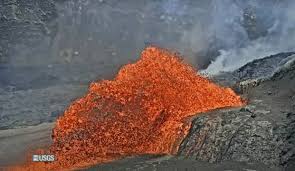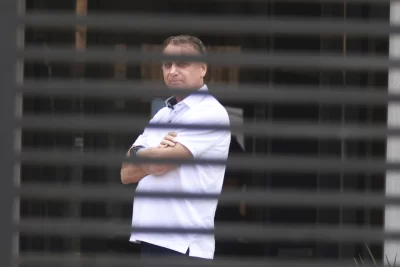
VOLCANOES NATIONAL PARK (HawaiiNewsNow) – Lava has been bubbling and splattering on-and-off from one of the vents at Kilauea.
Scientists from the U.S. Geological Survey said episode 31 of the eruption began at 2:04 p.m. Friday, and fountains have been steadily growing over 325 feet.
Scientists said the fountains have been coming out from the north vent at a 30-degree angle and would be 500 feet high if they were straight up.
Ken Hon, scientist-in-charge at the Hawaiian Volcano Observatory, explained the sideways lava fountain.
“If you remember, episodes 29 and 30 lost the ability to go to the really high fountains,” Hon said. “There were only somewhere between 100 and 300 feet high, that’s because after episode 28, the vent kind of slumped, and part of the cone slumped into the vent, and it changed the configuration.”
A social media post from the USGS Volcanoes X (formerly Twitter) page said it’s not the first time inclined lava fountains have been observed on Kilauea.
Scientists said the Kilauea Iki (1959) and Maunaulu eruptions (1969) featured similar episodes. Both cases were caused by temporary obstructions within the eruptive vents, usually a collapsed part of the vent or the surrounding cone.
Despite the angle, Hon said there won’t be any impact on the crater.
“It’s not gonna have any real impact on the crater. We do know that the weight, because there’s been more lava put on the west side than the east side, the weight at times has kind of tipped the surface of the crater a little bit and allowed older (lava) to leak out of the crater,” he said.
“We’ve got five years of lava down there that’s filling that hole that’s over a thousand feet deep underneath all of that,” Hon said. “So that what looks like solid rock is sitting on a very thick bunch of liquid, and we know from looking at Kilauea Iki when interrupted in 1959 that it didn’t actually solidify all the way through until about 35-40 years after that.”




